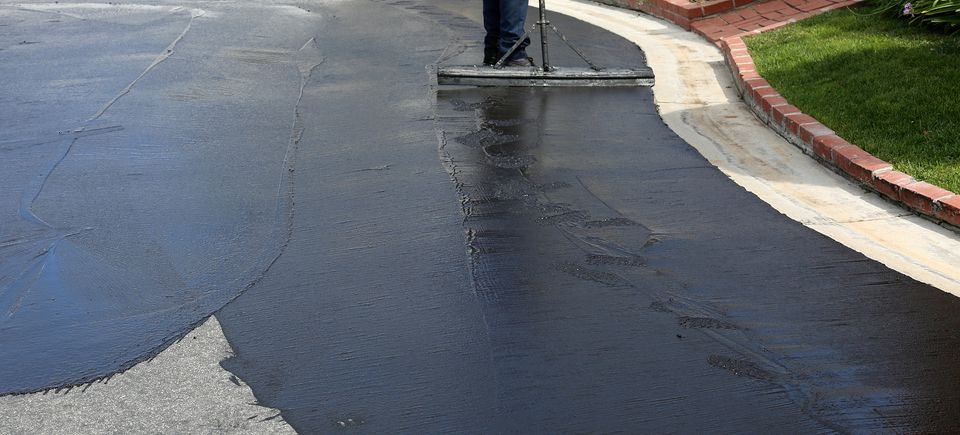Cold Mix Asphalt Vs. Hot Mix Asphalt: Which Is Right for You?

Composition Differences
Cold mix and warm mix asphalts vary substantially in their structure, with distinct features that impact their performance and applications. Cold mix asphalt is produced by emulsifying the asphalt binder with water and an emulsifying representative prior to mixing it with accumulation. This approach permits the asphalt to be convenient at reduced temperatures, making it perfect for temporary repairs and for usage in colder weather condition problems. Hot mix asphalt, on the various other hand, is made at high temperatures, normally in between 300-350 ° F, which assists to attain far better compaction and a more long lasting end product. The warm mix asphalt manufacturing process involves heating the aggregate and asphalt binder independently before combining them at the asphalt plant.
Moreover, chilly mix asphalt tends to be much less thick and a lot more adaptable than warm mix asphalt. This flexibility makes it far better matched for areas with greater levels of movement, such as driveways or roads with rush hour. On the other hand, warm mix asphalt is known for its high toughness and resistance to rutting and fracturing, making it a recommended choice for freeways and high-traffic roadways where durability is vital.
Installation Refine Variances
The procedure of installing cool mix and hot mix asphalt shows notable variations in their treatments and needs. Cold mix asphalt, being an extra adaptable product, can be used directly from the bag or container onto the fracture or harmed area. It calls for minimal preparation work, such as cleaning up the area and compacting the chilly mix with hand devices. This makes it a convenient option for momentary and quick fixes. In comparison, hot mix asphalt necessitates a much more elaborate installation procedure. It includes warming the mix to heats prior to laying it down on a properly ready base. The prep work consists of condensing the base, using a tack layer, and using heavy machinery like pavers and compactors for a durable and smooth surface. Because of the home heating needs, hot mix asphalt installments are generally accomplished by experts with customized equipment, making sure a much more irreversible and structurally audio outcome.
Longevity and Durability Aspects
When considering asphalt choices, durability and longevity are crucial aspects to evaluate for long-term sidewalk efficiency. Warm mix asphalt (HMA) is understood for its remarkable resilience and durability.
In terms of durability, HMA normally outmatches CMA as a result of its exceptional toughness and resistance homes. HMA pavements have a longer life span, calling for much less regular repair work and upkeep, which can translate to cost savings over time. Furthermore, HMA pavements are more quickly adjustable to satisfy certain job demands, even more improving their longevity.
Cost Factors To Consider
Thinking about the financial ramifications is a critical element when assessing the choice in between hot mix asphalt (HMA) and cold mix asphalt (CMA) for sidewalk tasks. While the first expense of warm mix asphalt is usually higher than that of cool mix asphalt, HMA typically provides an extra cost-effective visit the website service in the future due to its premium resilience and long life. HMA is moved here understood for its capability to endure hefty web traffic loads and rough weather condition conditions, reducing the need for frequent repairs and maintenance. On the other hand, chilly mix asphalt is much more affordable upfront yet may call for more regular patching and resurfacing, bring about higher maintenance prices in time.
In addition to product costs, it's important to take into consideration the costs associated with installment and upkeep when contrasting HMA and CMA. Eventually, the decision between HMA and CMA must take into account not just the initial expense however likewise the long-lasting financial effects to figure out the most cost-efficient option for the particular sidewalk project.
Environmental Impact Comparison
Comparison of the environmental impacts in between warm mix asphalt (HMA) and cold mix asphalt (CMA) reveals distinctive distinctions in sustainability practices. HMA production calls for high temperatures, leading to enhanced power consumption and greenhouse gas emissions. The process also releases unstable natural compounds (VOCs) and harmful air contaminants (HAPs) into the atmosphere. On the other hand, CMA is created and applied at reduced temperatures, reducing energy use and emissions considerably. The reduced manufacturing temperature levels of CMA cause decreased gas intake and lower browse this site degrees of carbon dioxide exhausts, making it a more eco friendly option.
Moreover, the use of CMA usually entails reusing existing asphalt pavement, promoting resource preservation and reducing the amount of waste sent to land fills. By choosing for CMA over HMA, roadway construction projects can add positively to ecological preservation initiatives.
Conclusion
To conclude, the choice between chilly mix asphalt (CMA) and warm mix asphalt (HMA) relies on numerous variables such as structure, installment procedure, toughness, durability, cost, and environmental effect. asphalt patch repair. While CMA provides a cost-effective and quick option for minor fixings, HMA guarantees remarkable resilience and longevity for heavy web traffic locations. Take into consideration these variables meticulously to establish which kind of asphalt is the best option for your paving requires

Considering the financial effects is a vital facet when evaluating the option between warm mix asphalt (HMA) and cold mix asphalt (CMA) for pavement tasks. While the preliminary cost of warm mix asphalt is generally higher than that of chilly mix asphalt, HMA commonly gives a more economical remedy in the lengthy run due to its superior sturdiness and durability. cold mix asphalt.Comparison of the environmental impacts in between hot mix asphalt (HMA) and chilly mix asphalt (CMA) discloses distinct distinctions in sustainability methods.In conclusion, the selection between cold mix asphalt (CMA) and warm mix asphalt (HMA) depends on different aspects such as structure, installment procedure, resilience, longevity, price, and ecological impact